Queen Rearing
- Hayden Chrisman-TCA
- Feb 12, 2021
- 5 min read
Queen rearing is a great way to increase your hives and can be combined with Varroa control. Raising queens introduces a brood break into the cycle of a hive. During this brood break a mite treatment can be used to kill almost all of the mites. I like to use Oxalic acid as it kills on contact and is natural and inexpensive. You do not have to be a sideliner beekeeper to raise queens. A few hives will suffice. You can raise up to 100 queens off of 1 hive. Raising queens is one of the cheapest ways to produce Nucs and grow your Apiary.

There are 2 types of hives you will need to produce queens.
1. Cell Builder
2. Mating Nuc
There is a 3rd type of hive often used in queen rearing called the cell finisher. The cell finisher is not necessary.
1. The first thing to do when raising queens is to pick out a Breeder Queen. The Breeder Queen will be the mother of the all queens you will be raising. When selecting a Breeder Queen, selecting from your favorite hive is usually the way to go. Here are a few traits to breed for.
•Brood pattern- solid pattern with few empty cells.
•Honey Production- Which hive produced the most honey?
•Pest Resistance-Which hive has the lowest mite count at any given time?
•Population- Which hive has the proper population for the different times of the year?
•Pollen arrangement- Is the hive well organized?
•Beeswax- Which hive draws wax the fastest?
The above pictures are all signs of a strong healthy queen.
Cell Builder
The next step is to set up your Cell Builder. The Cell Builder is the hive that you will use to raise your grafts. The Cell builder should be made up at least a few hours before you graft, or before you prepare you cells(Non-grafting method).
For larger grafts of 100 or more cells, make your cell builder in a deep and add more frames of honey, pollen, and bees.
Honey
Breeder larvae(temporary)
Fresh beebread facing in
Honey
This should be the configuration of your cell builder in a Nuc box. When you add the the grafted Larvae do not replace the frame you grafted from into the cell builder. You want your cell builder to focus all its attention on your cells. You can add another frame of pollen or honey when you put your grafted larva into the cell builder, so your box will have a total of 5 frames.

The Nuc
The nuc is the hive your queen cell will go into. Whenever you make up mating nucs it is very important that you move your nuc at least 4 miles away from their original home, or oversupply it with nurse bees (bees shaken off the brood). If you don’t, the hive may succumb to hive beetle because old bees will return to the original hive.
Make up your nuc at least 1 day before installing a queen cell. The hive needs time to recognize that they are queenless or they will destroy the cell.
The queen breeding nuc is mainly for raising queens; It can be used for several cycles of queens. You may need to add more bees to it to prevent it from succumbing to hive beetles.
The Colony starter nuc will quickly grow into a full hive especially if you feed it once the queen is mated.
Strong colony Starter Nuc
•2-3 frames of brood covered in bees
•1-2 frames of honey/pollen
Queen Breeding Nuc •1 frame of brood covered in bees •1 frame of honey
Non-Grafting Method
•Trim wax foundation until you encounter the right aged larva/eggs
•Give this frame to a cell-builder colony
•2 days before the cell hatches, cut the cell out and place them in mating nucs.
Your frame should be cut into a V shape. This is an idea of what your frame should look like. Take a very sharp knife to cut the cells off. This is a good way to raise a few cells, however, it is difficult to control how many they will raise. It could be just one or ten...
Grafting Method
Grafting is not overly difficult. If you wish to raise a large number of queen cells grafting is the way to go.
•Remove selected breeder comb from the cell builder.
•Wrap it in a damp towel
•Graft
•Replace grafting frame
•9-10 days later make up your mating nucs
•day 10-12 place the caped cells into the mating nucs
The following graphics by Randy Oliver
Queen Rearing Time-Line
Here is the step by step process of queen rearing.
If you are not grafting you will skip steps 5-6.
•Step 1. Make a cell builder colony
•Step 3. Check back an hour later for strength
•Step 4. Waite a few hours later for the bees to recognize they are queenless.
•Step 5. Pull the breeder queens larva and rap it in a damp towel
•Step 6. Graft
•Step 7. Replace the grafted cells into the cell builder.
•Step 9. 9-10 days later make up your mating nucs
•Step 10. day 10-12 place the caped cells into the mating nucs
It is imperative that you do not let a queen in your cell builder, otherwise they will not raise any queens.
The larva in the center picture is the correct age. It helps to graft in a dark room with a light you can shine directly into the cells.
Your cell builder should be very well filled. If you are only grafting a few cells your cell builder doesn’t need to be quite this strong. The bees will cling to the lid (left picture) in your cell builder.
( left) Photo by Randy Oliver

Photos by Randy Oliver
If you are grafting only a few cells, you do not need a special frame.
These Cells are ready to be placed in mating Nucs.
Collecting Nurse bees
Here is a way to collect nurse bees without finding the queen. Start by shaking all the bees off frames of brood into a nuc box. You will want to put a few frames into the the Nuc box so they will have something to climb on to.
Photos by Randy Oliver
Place all the frames of brood into a box and place a queen excluder on and then add another box.
You can now dump all the bees onto the queen excluder and they will move down to cover the brood. A little smoke will help and brushing may be necessary. If you still need more nurse bees you can shake frames directly on to the queen excluder. Queens will be left above and you can catch them and place them in their original hive.
Cell Finisher The cell finisher is usually used by beekeepers who produce a large quantity of cells. The cell finisher is a queen right colony that has the queen confined to the bottom box. The 1-2 day old cells are placed above the queen excluder in between 2 frames of open brood. Nurse bees will come up and finish rearing the cells. Using a cell finisher frees up the cell builder allowing the beekeeper to get more than 1 graft off of it. Queen cells finished in a queen right colony are also supposed to be of better quality.



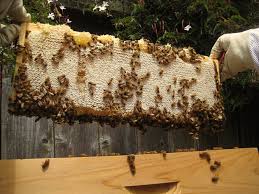

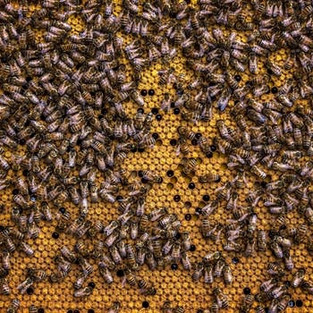
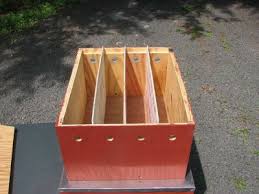
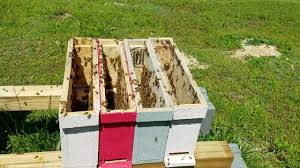


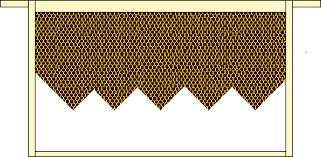

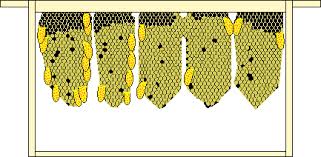


























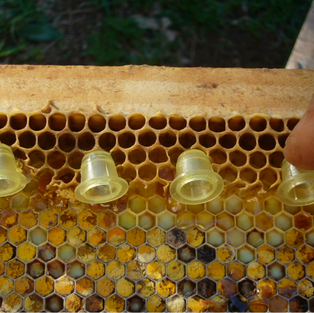



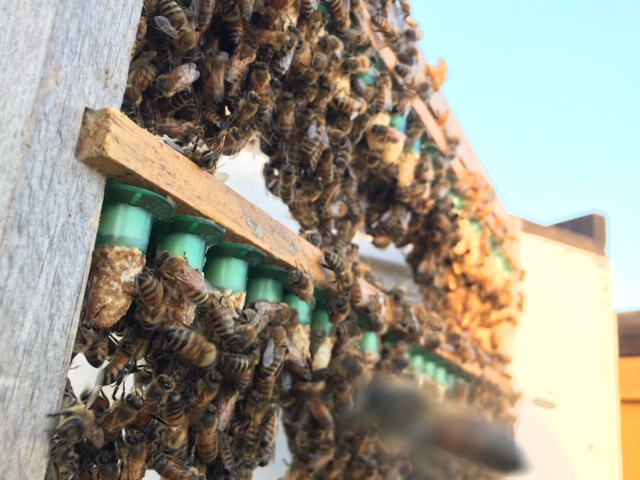








Comentarios